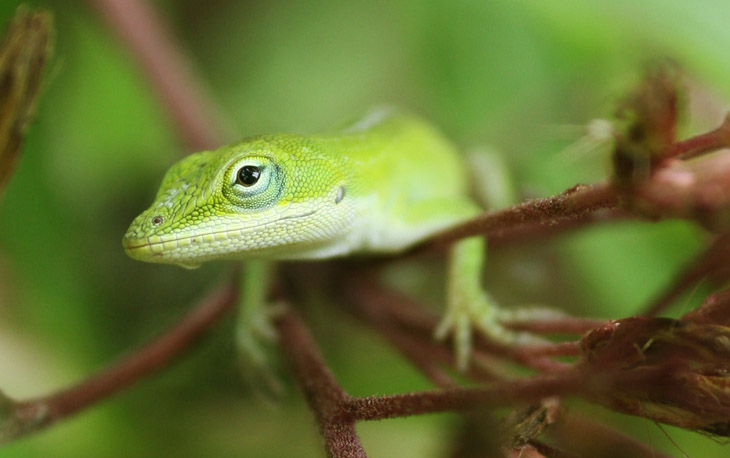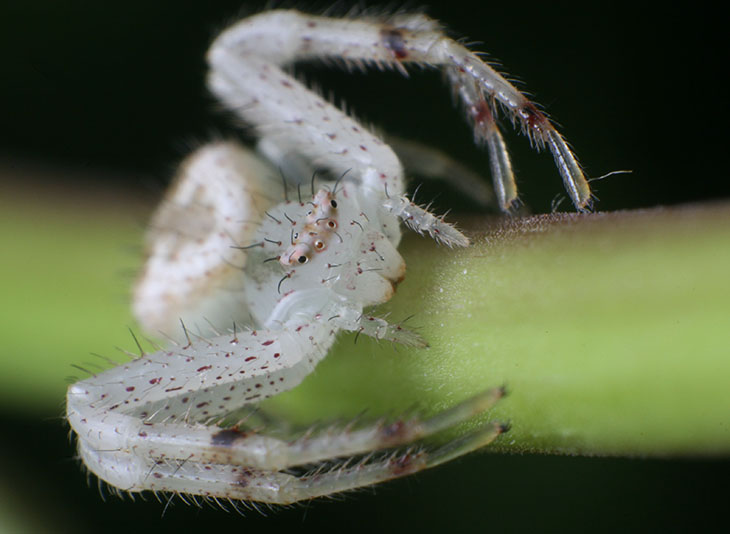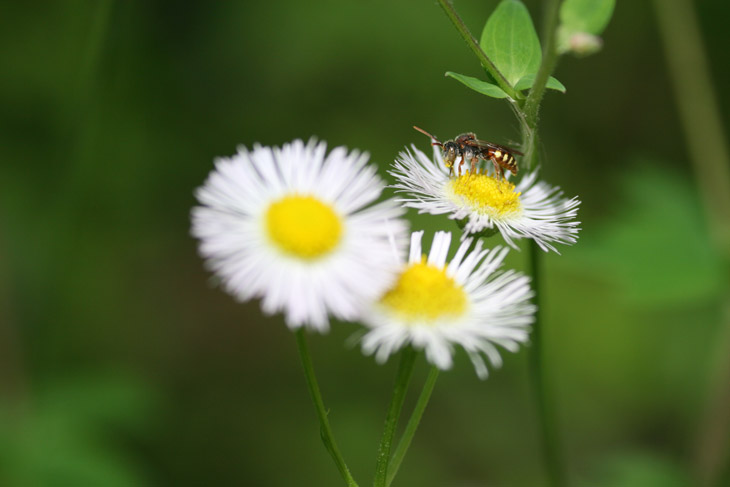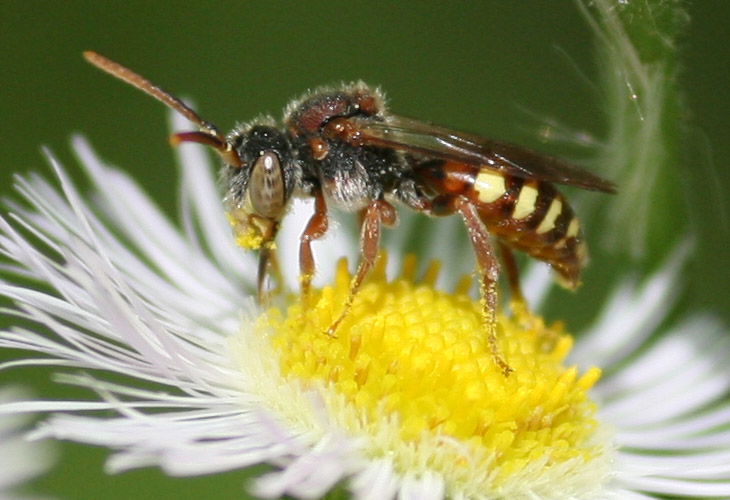
This is a very slight departure from the topic of composition, because it really doesn’t have anything to do with composition itself, instead being a set of techniques. However, they’re important techniques that apply to all forms of photography, and I don’t have a technique category, so…
As a photographer begins to consider making money from their work and/or entering into the competitive realm, the concept of being critically sharp becomes much more important. There are certainly many types of images that do not need perfect sharpness, but many more that do, and our eyes tend to jump to the sharpest and most well-defined portions of an image by nature; given two images with everything else being equal, people will favor the sharpest by a wide margin. For any photographer then, it’s worth knowing what can be done to produce this as much as possible, and there are several facets.
Equipment. The old saw was to spend much more on lenses than on camera bodies, and this still holds true, even though there’s been a surge in chasing megapixels, video capabilities, and all that stuff with the digital bodies now. It’s still the lens that will affect sharpness the most, and it pays to try and get the most worthwhile lenses you can. This usually means more expensive, but there’s a huge caveat within this: it’s not always the most expensive lenses that produce the best results, and shopping carefully might save you a bundle. Manufacturers aim for two brackets anymore: the ‘consumer’ buyer, with lenses that are light and inexpensive, and are often mediocre performers; and the ‘professional’ buyer, with lenses that have wider maximum apertures, lots of esoteric glass additives, and are almost always sharper than equivalent focal lengths in the consumer category. The markup on these professional lenses is ridiculous, however, usually costing many times the consumer equivalent while performing only 10-20% better. How you spend your money is up to you, but I tend to look at the investment and returns, as well as two simple facts: it is never the equipment that produces the stunning photo, but the skill and creativity of the photographer; and there are a lot of simple things that will significantly improve sharpness in any lens. There is one aspect of many more expensive lenses that can help a lot, however, and that’s a wider or larger maximum aperture (often called ‘faster’ lenses because they can allow faster/briefer shutter speeds.)
The wider the maximum aperture, the more light comes in through the lens, regardless of the aperture setting you’ve chosen for a particular image. This is because the aperture stays wide open until the shutter trips, whereupon it snaps closed in a fraction of a second right before the shutter itself opens. This allows for the brightest image in the viewfinder and getting to the autofocus, and in lower light conditions, this can make the difference between nailing focus exactly where you wanted it and missing that crucial point because it couldn’t quite be discerned, either by eye or by the AF mechanism. A lens with a maximum aperture of f2.8 will permit better focus, all other things being equal – which they often aren’t, so this isn’t a firm guideline – but it also means a larger lens with more glass, so more weight and bulk.
But spending a lot of money on lenses won’t always improve the results, while there are a lot of things that can be done which will help regardless. Let’s take a look at what other factors affect the sharpness of the image.
Stopping down. While a large maximum aperture helps with focusing, in many situations you won’t want to keep that maximum for the image, but instead use a setting a few stops smaller than that, for instance shooting at f8 instead of f2.8. There are two reasons for this.
The first is, nearly every lens performs better when stopped down. A smaller aperture reduces edge effects, chromatic aberration (color fringing) and improves focus. It varies from lens to lens, but the wide majority of them perform the best at f8 to f16. A little research or some careful tests will tell you where the ‘sweet spot’ is for each of your lenses.
The second reason is naturally depth of field. With a higher depth of field, the focus drops off less for subjects not quite at the point of sharpest focus. In other words, when aiming at a bird 20 meters away, the lens might actually be focused at 19.6 meters, not quite bang on, and with a higher depth of field the bird will still be in sharp-enough focus. Conditions vary widely of course, but the general rule is, stop down as far as you reasonably can to still get the shot – this also means rendering the focus on the background as desired (perhaps you want it very soft) and of course maintaining the shutter speed that’s necessary. Which leads to the next factor that affects sharpness:
Camera motion. Far and away, this is what produces blurry images, and more so in some situations. If the camera moves at all while the shutter is open, then some kind of motion blur is going to occur. So there are two things that we can do to reduce this as much as possible: keep the camera steady, and have the shutter open as briefly as possible.
Steadiness can be simple – a good tripod is a sound investment, many times cheaper than more expensive lenses. It’s best to get in the habit of carrying one and using it for as much as possible, despite how inconvenient this might seem. Most especially, when you have one shot at a particular image and will not be able to duplicate those conditions again, why chance trashing the photo because you didn’t want to fuss with the tripod? Remember that a tripod works by being immobile, so while a light tripod is easier to lug around, it also works less well than a heavier counterpart, especially for long exposures where wind or bumping can be an issue. Also, use the tripod with as little extension as possible, especially the center column, which is the weakest link – it’s most prone to shake and settling. For most nature offerings, I recommend legs that spread independently and have variable spread settings – many can get right down near the ground. You’ll also want a sturdy head that locks tight and doesn’t settle – when you lock it and let go of the camera, there should be no change of view, and it might need to remain exactly that way for minutes.
When you can’t use a tripod, a monopod may still work, and sometimes even a ground-level beanbag to settle the camera within. Failing that, bracing yourself or the camera against an immovable object can be sufficient. But sometimes all it takes is thinking about being steady in the first place. Feet should be planted and body upright. Both hands on camera, elbows tucked to sides. What I often tell my students is to think of ourselves as observers, the fly on the wall, when everything is happening – it’s a mindset that removes us from being ‘involved’ and tends to make us try to be unobtrusive, which means we slow down and keep still more often. Anticipating the action ahead of time and being in place for the best angle means we’re not running around. And even how we press the shutter is important; the camera doesn’t take a photo any faster by slamming the shutter release down, and it only takes a tiny press to trip it.
While there is no rule that can be applied to how low is too low of a shutter speed when the camera is held freehand, especially with stabilized lenses and such, the basic guideline is that your shutter speed should be at least 1/[focal length] – in other words, if you’re shooting with a 100mm lens, your shutter speed should not be below 1/100 second; with a 500mm lens, that goal is 1/500 second, because greater magnification means any camera motion is magnified too. So the idea is to keep the shutter speed as fast as possible. The fast lenses mentioned above can help, but only when they’re used at maximum aperture – setting the controls at f8 won’t help at all with the shutter speed. What helps much more is going with a higher ISO setting, which makes the camera more sensitive to light, so less is needed for a good exposure and the shutter speed can be faster. There’s a limit to this of course, because higher ISOs cause image degradation – you can easily end up trading motion blur for blotchy, noisy images. Get familiar with your camera and know how high an ISO setting is too high, where the quality has dropped so low that the image is unusable. When we’re talking critical sharpness and competing with other photographers, you want the images as nice-looking as possible, so you aim for the lowest ISO that can work in that situation.
Some notes about ISO and its effects. Gradient areas, like the gentle changes in the hue of the sky, will show the bad effects of ISO quickly, while detailed images show it far less. Because we’re so used to older B&W images being grainy due to the film quality many years ago, if you’re going to convert to monochrome, you can often get away with quite high ISO settings. Also, the truly horrendous nature of smutphone images have lowered the bar on what’s acceptable. And finally, if it’s going to be a once-in-a-lifetime image, something rare or really compelling, a lapse in quality is preferred over blurring the shot (or not getting it at all.) So generally, use the lowest ISO setting necessary to get the shot, but get the shot.
More light. A flash or strobe, of course, can help keep the shutter speed up by adding light to the scene, but there are a lot of mitigating factors. The first is how much additional light is needed; flash units can only put out so much light. This ties in with what kind of subject matter is being photographed, since the farther it is from the camera, the less light is reaching it and making it back to the camera – subjects with a significant difference in distances, such as a group of people throughout a room, will be illuminated differently unless some elaborate systems have been worked out to keep the light balanced.
Several of the newer camera/flash systems operate to help this along, such as Canon’s E-TTL and Nikon’s i-TTL; both operate by measuring the ambient light levels, before the flash has gone off, and producing enough light to illuminate the focused subject adequately while allowing the ambient light to expose the entire scene. These can produce a nicely balanced lighting effect in the final image, but if the ambient light is too low, the shutter speed will still have to be slower to allow that light to expose for the scene, and motion blur can still occur.

In some shooting situations, motion blur can be eradicated by using the flash as the sole illumination, disregarding (or even eliminating) ambient light altogether. The duration of the light burst from a flash/strobe can be very short, 1/1,000 second down to 1/10,000 second, so even a rapidly-moving subject such as splashing water can be frozen in midair. With such techniques, it really doesn’t matter what shutter speed is set, because the light only lasts for the fraction of a second, so no exposure is taking place outside of that brief duration. However, achieving this usually requires a ‘tabletop’ subject, something small and close that doesn’t require a lot of light in the first place. In macro work, this is what’s responsible for the appearance of being shot at night, because the background or scene receives almost no illumination from the flash – this is often exacerbated by the fact that macro work may be using shutter speeds of 1/125 second or faster to prevent motion blur, and apertures of f16 or smaller to produce the highest depth of field for the subject. However, such techniques can be sufficient to prevent motion blur even if the subject is moving and the photographer is not in a perfectly steady position (which can easily happen with macro) – the ability to trip the shutter exactly when the subject is in sharpest focus is crucial here.
Knowing the limits of autofocus. While autofocus is a wonderful achievement in cameras, it’s not perfect, and can be fooled. Subjects with a variety of distances within the focus zone, such as a bird within tree branches, can cause the autofocus to lock onto something other than the chosen subject, especially when the subject is small. This is worsened with modes that can track a moving subject, because a slight twitch of the camera away from the subject can cause the AF to refocus onto something else, often just as we trip the shutter.
But much more pertinent is that autofocus needs sharp contrast to lock effectively. Subjects with only subtle variations in contrast or color, or low light, can cause AF to ‘search’ without obtaining a lock, or even lock on without actually being in sharpest focus. In such situations, the photographer should switch off the autofocus and do it manually – you’d be surprised at the number of students of mine that had no clue how to do this: which switch to trip, which ring on the lens to use. A good photographer should be able to do two things as soon as autofocus starts to get balky:
1. Find a spot in the scene, the same distance as the chosen focal point, that has better contrast to lock focus onto before recomposing and tripping the shutter – this might be as simple as re-aiming down to the subject’s shirt for a moment;
2. Immediately switch off autofocus when this fails and manually focus the lens for optimum sharpness – which still might benefit from finding that spot of higher contrast.

Position yourself to use depth of field wisely. When depth of field is going to be short, it can help a lot to position the camera to have as much of the subject at the correct focal distance as possible; this basically means flat to the camera (or parallel with the camera back and thus the sensor.) It can be very easy to make the subject boring in this manner, so a little judgment is in order – as you can see from the images illustrating this post, the entirety of the subject does not have to be in focus for every situation, but for some subjects, it works much better to see everything sharply rather than only a portion. Often all this takes is a trivial shift in position, without needing any other techniques mentioned here, but it can improve on some of them as well.

Also know that, as a species, we tend to look to the eyes first – keeping these sharp is automatically more pleasing to the viewer, even if it’s an insect with compound eyes. In situations where there are a variety of eyes to choose from, such as a small group of people, pick the set with the best lighting, expression, and ability to draw the viewer in; definitely the one facing more towards the camera, all other things being equal. Remember that a lot of photography is emotional, so providing a subject that the viewer relates to easiest makes the image stronger.
When in doubt, try again. There’s nothing worse than snapping a once-in-a-lifetime frame and getting home to discover that focus wasn’t perfect. If the conditions give any opportunity at all for focus to be off, get several frames, and if need be, vary the techniques. Twitch the camera away from the subject for a moment, letting it refocus elsewhere, before aiming back and locking focus on the subject again; sometimes this is enough to tweak focus just a tad sharper (some lenses lock on better when focusing out rather than in, i.e. tracking out from being focused much closer than the subject really is… or vice versa.) Close the aperture down a little to allow some leeway with depth of field. Shoot a few frames to try and capture when you’re holding the steadiest. Switch to manual focus and shoot a few frames with tiny adjustments of the ring. As long as you get one image that works…
And of course, combine techniques. There’s no such thing as being too sharp… well, okay, not in the vast majority of photographic situations, anyway. Naturally every technique above cannot be applied in every situation, but most times more than one is easy enough to pull off, and none of them will interfere with another to make things worse. If I had to pick two that would work in the largest number of scenarios, I’d say “stop down” and “use a tripod,” but all of them are tools in the photographer’s repertoire, some able to be applied in certain situations much easier than others (relying on a tripod during a wedding might be more hassle than benefit, for example.) Use what works, but never settle for lower sharpness than you can achieve.

A couple of examples to further illustrate the items in this post. Above, the full-frame shot, while below is a full-resolution inset from the same frame. Shot handheld in natural light at 1/800 second, ISO 250, the aperture was left wide-open at f4 to help prevent both my own movement and the breeze-driven flowers from blurring in the shot; naturally timing had a lot to say in the matter. Autofocus wasn’t an option in such conditions, but also because I wasn’t using an AF lens; this is actually a macro lens made for Mamiya 645 medium-format cameras, adapted to use on a Canon SLR. Fairly inexpensive, and sharp as hell. However, I also shot a lot of frames to get one that nailed focus in this manner.

Meanwhile, go back up and look at the spider photo again. There, you can see the “night shot” effect of using a flash unit with a fast shutter speed and a small aperture, and how it makes the background drop into darkness (even though the image was done in bright daylight.) There, timing was important solely because of my own minor twitching, since magnification was very high and focus, even at f16, noticeably short – the spider measures 6mm across, so effective depth can be considered about 2mm, which is a pretty narrow margin to try and remain within no matter what. Shutter speed 1/250 second, f16, ISO 250, but of special note is the lens, which is a damaged and supposedly worthless Sigma 28-105 used in reverse – not an expensive lens when new, and certainly not a dedicated macro lens. Used in this manner, however, it performs almost as good as lenses costing a thousand dollars. A little experimentation can pay off handsomely.



















































